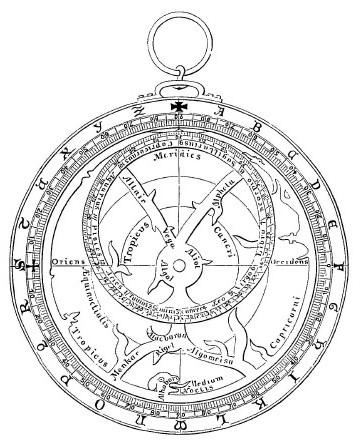Chaucer’s Astrolabe
 |
This image comes from a nineteenth century edition of Geoffrey Chaucer’s 1391 work “Treatise on the Astrolabe.” The drawing depicts the front of the instrument as described by Chaucer.
An astrolabe was a device used for the observation, measurement and calculation of numerous astronomical and astrological phenomena. For example, it could determine local latitude, identify stars and planets and determine their altitude, and determine the astrological location of the Sun and Moon in the particular Houses of the Zodiac.
The first astrolabes were developed during the late Hellenistic period. Islamic astronomers improved on and further developed these instruments, finding them very useful in determining such things as the dates for various religious holidays, as well as the direction of Mecca, necessary for performance of the five daily prayers. It is nearly certain that Chaucer based his Treatise on a comprehensive work on the device by the Persian-Jewish astrologer Mashallah ibn Athari dating from the late eighth or early ninth century and subsequently translated into Latin.